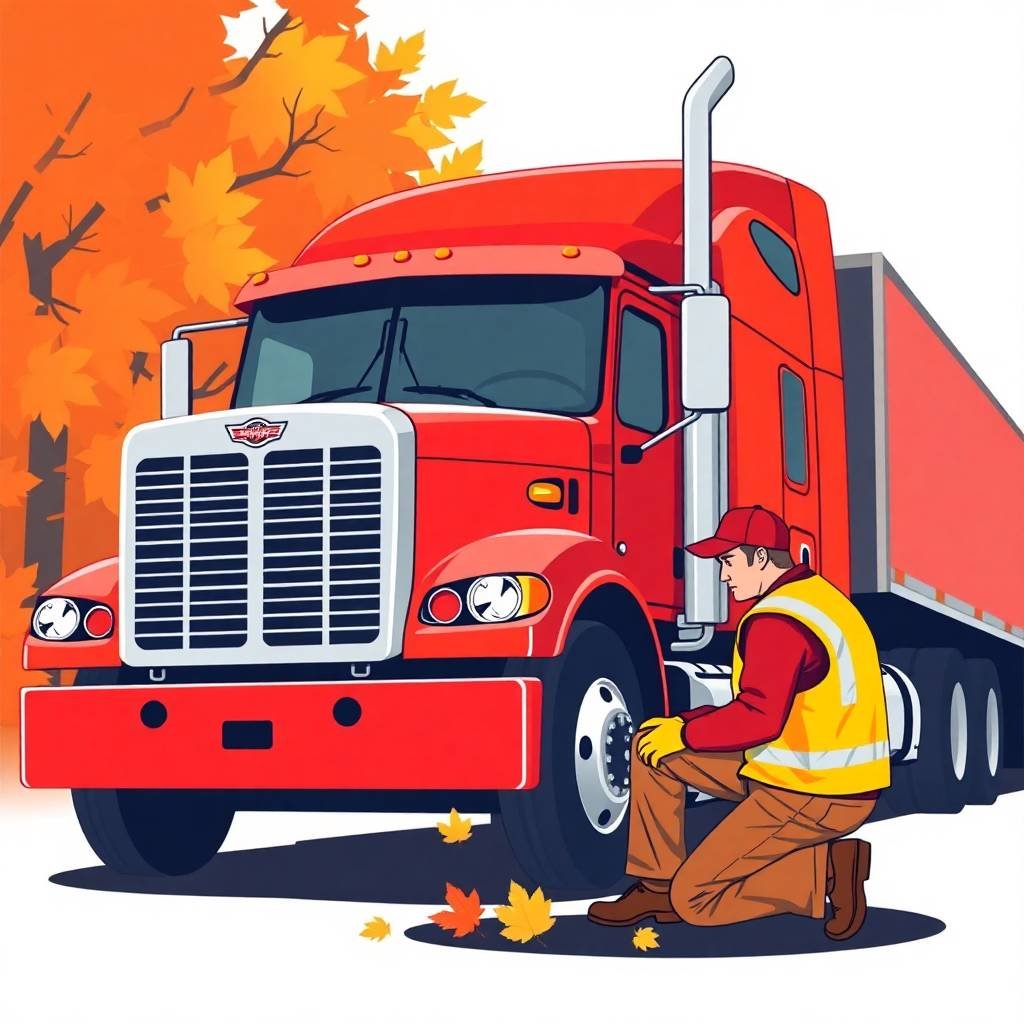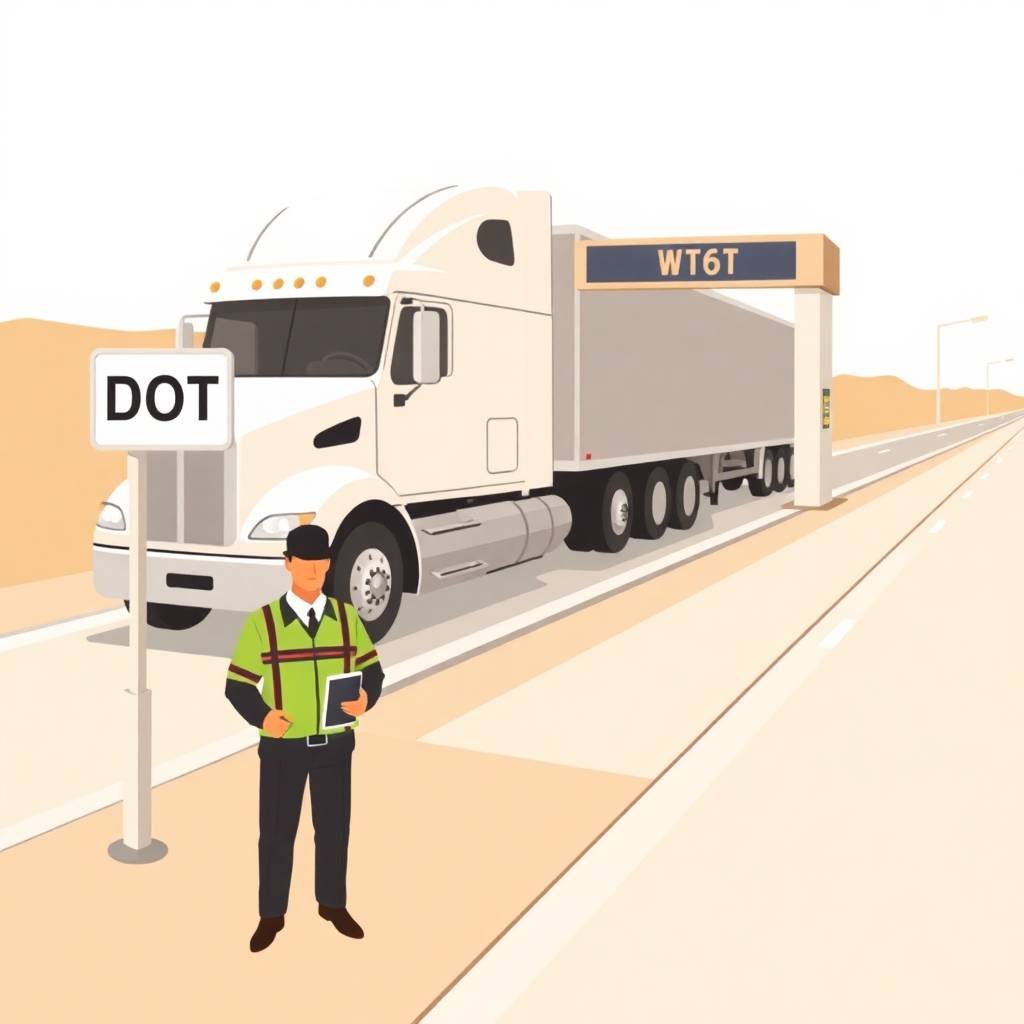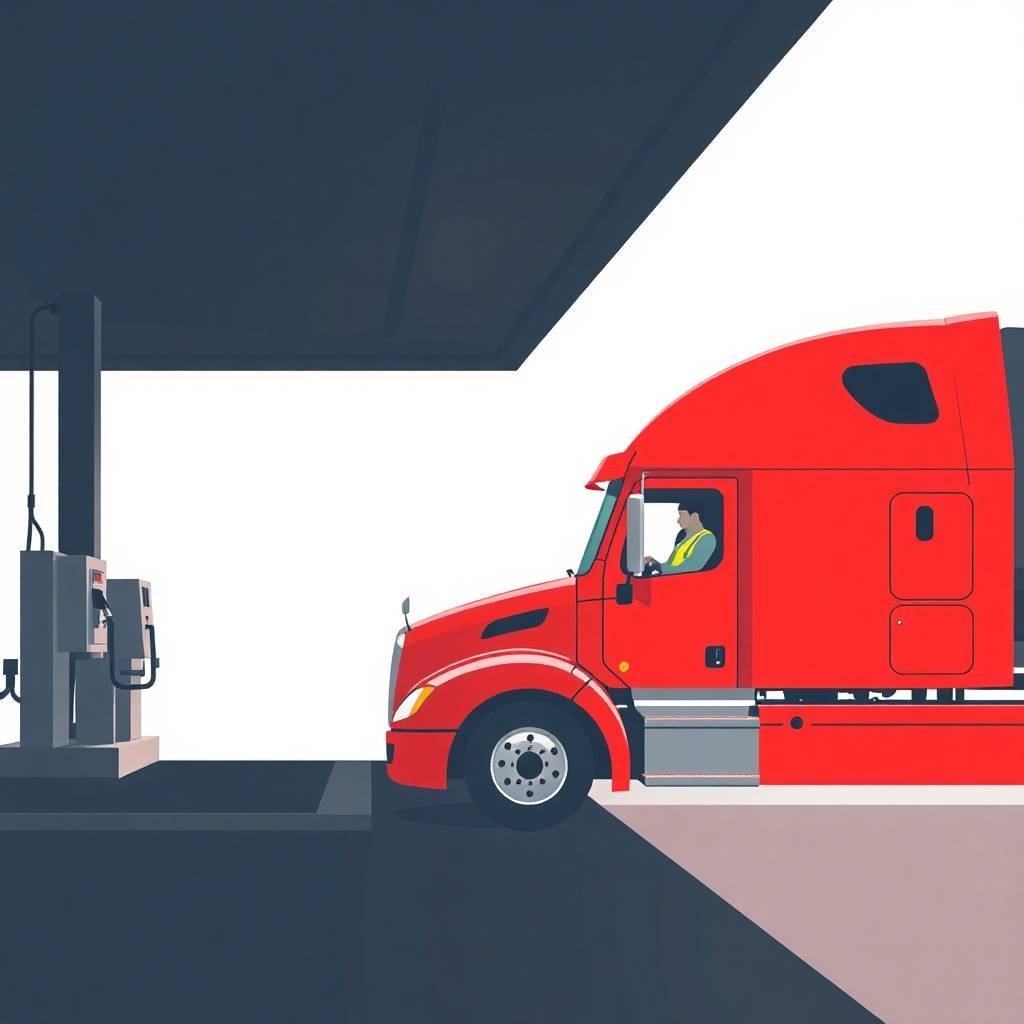1. Understand the Core Purpose of the DVIR Compliance Checklist
In the fast-paced world of trucking and logistics, safety and regulatory compliance are non-negotiable. One of the most vital tools in ensuring both is the DVIR Compliance Checklist—a required process for identifying vehicle issues before they become dangerous or costly. For carriers and owner-operators, understanding the core purpose of the DVIR Compliance Checklist is essential for avoiding violations, maintaining operational efficiency, and passing DOT inspections.
What Is the DVIR Compliance Checklist?
The DVIR Compliance Checklist (Driver Vehicle Inspection Report) is a federally mandated record-keeping system required by the FMCSA (Federal Motor Carrier Safety Administration) and outlined by the U.S. Department of Transportation (Transportation.gov). It ensures that commercial drivers conduct a thorough inspection of their vehicles before and after each trip. Items typically include brakes, lights, steering mechanisms, tires, and emergency equipment.
By adhering to the DVIR Compliance Checklist, carriers can proactively catch safety issues, mitigate liability risks, and improve CSA scores. Learn more about managing safety scores with our Driver Safety Score Management service.
Why DVIR Compliance Matters
Failure to comply with the DVIR Compliance Checklist can lead to serious consequences. Missing or incomplete DVIRs are a red flag during audits and inspections. If violations are discovered, they can impact your Safety Measurement System rating—covered in more detail in our FMCSA SMS 2025 update.
Moreover, unresolved issues can cause mechanical failures or accidents, putting drivers, cargo, and the public at risk. For insight into correcting previous issues, visit our resource on how to correct FMCSA violations.
Compliance Beyond the DVIR
While the DVIR Compliance Checklist is foundational, it’s only part of full DOT compliance. Carriers should also ensure alignment with Drug and Alcohol Testing Management, DQ File Requirements, and ongoing DOT Audit Preparation. You can explore common compliance mistakes to avoid them before they lead to penalties.
Integrating DVIR into Broader Compliance Systems
Using tools like our DOT Compliance Checklist for Owner-Operators can help integrate the DVIR Compliance Checklist with other vital responsibilities. Combining vehicle inspection tracking with services like IFTA, IRP & BOC-3 Support and UCR Filing Deadlines creates a full-spectrum compliance solution.
Stay Ahead with Professional Support
Whether you’re new to the industry or managing a fleet, working with experts can take the pressure off internal teams. Schedule a personalized consultation through this appointment link to review your current checklist and develop a customized compliance plan.
Need help staying compliant with other FMCSA requirements? Explore our comprehensive services:
More Insights and Resources
Stay informed by browsing our most recent posts at TruckersComplianceHub.com. You can also explore related compliance topics including:
- FMCSA Clearinghouse Compliance
- DOT Drug and Alcohol Testing
- Pre-Employment Testing Requirements
- Random DOT Drug Testing
- Driver Qualification File Violations
Please review our Disclaimer and Terms of Service for more details on our site and services.
Understanding and leveraging the DVIR Compliance Checklist can help you avoid unnecessary risk and maintain a strong safety profile. With the right tools and guidance, staying compliant is not just possible—it’s profitable.

2. Know Which Items Must Be Inspected Daily
Every commercial motor vehicle on the road must adhere to strict safety and compliance protocols. A critical part of that responsibility is completing a DVIR Compliance Checklist—a federally mandated document ensuring vehicles are roadworthy and safe to operate. By understanding which items must be inspected daily, drivers and fleet managers can avoid costly violations and contribute to safer roadways.
Why the DVIR Compliance Checklist Matters
The DVIR Compliance Checklist isn’t just a formality; it’s a legal requirement under the Federal Motor Carrier Safety Administration (FMCSA), accessible at FMCSA.gov, and enforced through DOT regulations provided on Transportation.gov. This checklist is essential for identifying vehicle defects or mechanical issues before they lead to accidents or violations. For carriers looking to avoid compliance errors, our guide on FMCSA compliance mistakes is an essential read.
What Must Be Inspected Daily?
Each day, drivers must thoroughly inspect several critical vehicle components using the DVIR Compliance Checklist. The primary inspection items include:
- Service brakes and trailer brake connections
- Parking brake
- Steering mechanism
- Lighting devices and reflectors
- Tires, wheels, and rims
- Horn and windshield wipers
- Rearview mirrors
- Coupling devices
- Emergency equipment
Missing just one of these items can trigger an out-of-service violation. Use our DOT Compliance Checklist for Owner-Operators to ensure nothing is overlooked.
Integrating DVIR into Overall Compliance
The DVIR Compliance Checklist works in tandem with broader DOT requirements such as Driver Qualification Files, random drug testing programs, and pre-employment testing. When properly aligned, these compliance tools protect your fleet from liability and improve your FMCSA Safety Measurement System scores.
Need help? Learn how to manage your compliance more efficiently with our driver safety score management and audit preparation services.
Avoid Violations Before They Happen
Inadequate DVIR practices can result in CSA points, fines, and even being placed out of service. We’ve helped countless carriers learn how to correct FMCSA violations and avoid repeat offenses. Our full suite of services—from UCR filing to IFTA, IRP & BOC-3 support—ensures comprehensive protection.
Resources to Stay Compliant
Get practical support through our tailored FMCSA compliance help for trucking companies, or explore our owner-operator compliance services designed for independent drivers.
Also, for those preparing for audits, don’t miss our New Entrant Audit Survival Tips and tools like the CSA intervention thresholds guide.
Book a Personalized Compliance Review
The most effective way to master the DVIR Compliance Checklist is with one-on-one guidance. Schedule your 30-minute consultation with our team today to review your checklist and compliance strategy.
Stay Informed with the Latest Updates
Explore our full library of posts at TruckersComplianceHub.com, including detailed insights into DQ file violations, DOT audit preparation for 2025, and drug and alcohol testing compliance.
Before proceeding, we recommend reviewing our Disclaimer and Terms of Service to understand how we deliver compliance assistance.
Understanding which items to inspect daily through the DVIR Compliance Checklist is one of the simplest, yet most effective ways to protect your business and your drivers.

3. Avoid Common DVIR Mistakes That Trigger FMCSA Penalties
Every commercial fleet operator and driver must understand the significance of the DVIR Compliance Checklist. Neglecting this daily responsibility not only jeopardizes safety but can also lead to hefty penalties from the Federal Motor Carrier Safety Administration (FMCSA). Fortunately, by identifying and avoiding common mistakes, you can stay compliant and protect your business from violations.
Understanding the FMCSA’s Expectations
The FMCSA—found at fmcsa.dot.gov—requires a daily vehicle inspection report to ensure all commercial motor vehicles are safe to operate. The DVIR Compliance Checklist is a structured way to document these inspections and catch issues early. FMCSA regulations are detailed and enforced in partnership with broader federal guidelines found at Transportation.gov.
Missing or incomplete inspections can quickly raise red flags. For help with overall requirements, visit our FMCSA Compliance Requirements for Trucking Companies post.
Top DVIR Mistakes That Lead to Penalties
- Skipping Daily Inspections
Many carriers make the costly mistake of skipping inspections entirely or only performing them sporadically. The DVIR Compliance Checklist must be completed at the end of every day the vehicle is operated. It’s the driver’s responsibility to note any defects and for the carrier to correct them before the vehicle is back on the road.
- Incomplete Reports
Filling out only part of the DVIR Compliance Checklist—or checking items without actually inspecting them—is another major issue. Incomplete checklists often lead to violations discovered during DOT audits. Refer to our DOT Compliance Checklist for Owner-Operators to ensure no component is overlooked.
- Failure to Address Defects
Identifying a defect and failing to correct it is one of the quickest ways to face FMCSA penalties. Use our How to Correct FMCSA Violations guide for step-by-step instructions.
- No Maintenance Follow-up
A DVIR is only useful if the maintenance team addresses reported defects. A recurring theme in many FMCSA compliance mistakes is poor communication between drivers and maintenance departments.
- Ignoring Related Compliance Areas
DVIR compliance is only one piece of the puzzle. It connects to DQ file violations, drug and alcohol testing compliance, driver qualification file requirements, and more. Integrated compliance management is essential for passing FMCSA audits—see our DOT Audit Preparation 2025 for full preparation support.
How to Stay Compliant with Confidence
Using a structured DVIR Compliance Checklist, regular internal audits, and supporting services like driver safety score management, drug and alcohol testing management, and CSA intervention threshold guidance keeps your company safe and audit-ready.
We also help with IFTA, IRP & BOC-3 Support and UCR Filing Deadlines, as well as tips to survive the New Entrant Safety Audit.
Schedule a Compliance Review
If you’re unsure where your company stands, schedule a 30-minute consultation to walk through your DVIR Compliance Checklist and uncover risks before they become violations.
Explore More Resources
Stay informed with our growing list of expert articles at TruckersComplianceHub.com. Popular reads include FMCSA Clearinghouse Compliance, Pre-employment DOT Drug Testing Requirements, and the Safety Measurement System (SMS) 2025.
We also offer complete support services through our FMCSA Compliance Help for Trucking Companies and FMCSA Compliance Services for Owner-Operators.
For legal transparency, please review our Disclaimer and Terms of Service before engaging with our site and services.
By avoiding common DVIR Compliance Checklist errors, your fleet can operate efficiently, stay compliant, and steer clear of costly FMCSA penalties.

4. Train Drivers to Properly Complete Every DVIR Entry
Driver training plays a pivotal role in ensuring that your company stays compliant with federal regulations. One of the most overlooked yet critical areas is the DVIR Compliance Checklist—the daily vehicle inspection report that drivers are federally required to complete. Proper training in DVIR completion can reduce FMCSA violations, improve safety scores, and keep your fleet on the road without disruption.
Why the DVIR Compliance Checklist Matters
The DVIR Compliance Checklist is a mandatory document enforced by the Federal Motor Carrier Safety Administration (FMCSA), accessible at fmcsa.dot.gov, and further supported by federal transportation laws available at Transportation.gov. This checklist ensures that commercial motor vehicles are inspected daily for any safety-related defects. It also plays a major role in avoiding costly FMCSA penalties.
For a broader understanding of trucking compliance, we recommend reading the FMCSA Compliance Requirements for Trucking Companies.
Common Mistakes in DVIR Entries
Improper or incomplete entries on the DVIR Compliance Checklist are among the most common compliance mistakes. These include vague descriptions, missed inspection items, failure to report defects, or not certifying repairs. Mistakes like these are often flagged during DOT audits, as discussed in our DOT Audit Preparation 2025 guide.
Our post on FMCSA Compliance Mistakes offers a deep dive into errors to avoid during DVIR and other documentation processes.
Train Drivers to Master Every Entry
Driver education must include how to accurately and thoroughly complete the DVIR Compliance Checklist. Every line item—from brakes and lights to tires and windshield wipers—must be physically inspected and clearly documented. Drivers should understand when to escalate an issue and how to note repairs appropriately.
Proper DVIR training should also tie into related compliance areas. For instance, make sure your team is also well-versed in Driver Qualification File Requirements and DQ File Violations, as they often come under scrutiny during FMCSA audits.
Supporting Tools and Services
To make this easier, we offer structured services like the DOT Compliance Checklist for Owner-Operators, Driver Safety Score Management, and Drug and Alcohol Testing Management. These are critical for achieving overall compliance readiness.
Don’t overlook how DVIR connects to Drug and Alcohol Testing Compliance, especially during pre-employment or random screenings. See our detailed resources on Pre-employment DOT Drug Testing Requirements and Random DOT Drug Testing Requirements.
Ensure Long-Term Compliance
Training alone isn’t enough—you also need processes and follow-up. Use our resources like How to Correct FMCSA Violations and CSA Intervention Thresholds to identify and mitigate risks. New companies can also benefit from our New Entrant Safety Audit Survival Tips.
We also provide support for IFTA, IRP & BOC-3 Compliance and UCR Filing Deadlines to round out your regulatory needs.
Book a Consultation and Explore More
Need help training your drivers or improving your internal audit processes? Schedule a 30-minute consultation to walk through your DVIR protocols and compliance strategy.
You can also view the latest posts on our site to stay current on FMCSA regulations and enforcement trends. For more in-depth services, explore our offerings for FMCSA Compliance Help for Trucking Companies and FMCSA Compliance Services for Owner-Operators.
Before using our site and services, please review our Disclaimer and Terms of Service.
Training your drivers to complete every DVIR Compliance Checklist entry correctly isn’t just smart—it’s essential to operating a safe, efficient, and FMCSA-compliant fleet.

5. Implement a Review System to Catch Issues Before They Escalate
Creating a strong internal review system is essential to maintaining compliance, avoiding violations, and ensuring your fleet operates safely. One of the most overlooked aspects in daily operations is the DVIR Compliance Checklist—a required daily inspection log that, if ignored or poorly managed, can lead to serious FMCSA penalties. An effective review system ensures that these reports are monitored and corrected before small issues grow into major compliance problems.
Why a DVIR Review System Is Crucial
The DVIR Compliance Checklist serves as the first line of defense against vehicle malfunctions and FMCSA violations. According to FMCSA regulations, drivers must conduct thorough inspections at the end of each workday. However, the responsibility doesn’t end with the driver. Management must implement a process to review, verify, and follow up on all DVIR entries.
By adopting a structured review process, you ensure that every defect is addressed promptly and each checklist is fully completed, minimizing the risk of violations. For full context on regulatory expectations, refer to Transportation.gov.
Common Compliance Gaps to Watch For
Many fleets fall into non-compliance due to missed or misfiled entries in the DVIR Compliance Checklist. Common errors include failure to report issues, ignoring repair verification, or not keeping records for the required duration. Our guide on FMCSA Compliance Mistakes outlines how such oversights can trigger audits and penalties.
Internal monitoring should also extend to related areas such as Driver Qualification File Requirements and DQ File Violations, which are frequently reviewed alongside DVIRs during audits.
Key Components of an Effective DVIR Review System
- Daily Oversight
Designate a compliance officer or supervisor to review each DVIR Compliance Checklist daily. This step ensures issues are addressed before drivers begin their next shift. - Cross-Check with Repair Logs
Integrate DVIR entries with maintenance logs to verify that reported defects are resolved. Visit our How to Correct FMCSA Violations guide for best practices in repair documentation. - Audit-Readiness Preparation
Use the DOT Compliance Checklist and DOT Audit Preparation Services to ensure your records meet FMCSA standards. - Driver Training & Feedback
Regularly train your drivers on how to properly complete the DVIR Compliance Checklist and provide real-time feedback. This step also ties into ensuring accurate Pre-employment and Random Drug and Alcohol Testing compliance.
Integrate DVIR Reviews with Broader Compliance Programs
To ensure full regulatory coverage, align your DVIR review system with broader safety and compliance programs. Utilize services such as Driver Safety Score Management, Drug and Alcohol Testing Management, and IFTA/IRP/BOC-3 Support. Our posts on FMCSA Safety Measurement System SMS 2025 and CSA Intervention Thresholds explain how these metrics directly affect your safety rating.
If you’re a new fleet or owner-operator, don’t miss our New Entrant Safety Audit Survival Tips and DOT Compliance Checklist for Owner-Operators.
Stay Proactive with Expert Support
Need help developing or enhancing your DVIR review system? Schedule a 30-minute appointment for a personalized consultation.
Stay informed by visiting Truckers Compliance Hub and exploring our comprehensive service offerings for FMCSA Compliance Help and Owner-Operator Solutions.
For full transparency, please review our Disclaimer and Terms of Service.
Building a strong review system around the DVIR Compliance Checklist not only protects your fleet but also keeps you ahead of FMCSA enforcement actions. Don’t wait for an audit—implement a review system today.

6. Use Digital Tools to Streamline Your DVIR Compliance Checklist
In today’s highly regulated transportation industry, staying compliant with FMCSA rules is more than a best practice—it’s a necessity. One of the most critical aspects of fleet compliance is the DVIR Compliance Checklist, a mandatory part of daily operations that often becomes a paperwork burden. Fortunately, digital tools now offer efficient, secure, and streamlined ways to manage DVIRs without compromising compliance or safety.
Why Switch to Digital DVIR Solutions?
A paper-based DVIR Compliance Checklist can easily result in missed entries, illegible writing, or lost forms—each posing serious risks during a DOT audit or FMCSA inspection. Digital tools offer a streamlined solution by ensuring accuracy, completeness, and immediate access to inspection records.
When you digitize your DVIR Compliance Checklist, you gain real-time visibility into vehicle health, speed up defect reporting, and reduce the risk of FMCSA compliance mistakes. These benefits are not just operational—they help lower CSA scores and avoid costly violations that impact your company’s standing on the FMCSA Safety Measurement System (SMS).
Features to Look for in Digital DVIR Tools
To maximize your investment, choose a platform that meets or exceeds FMCSA and Transportation.gov requirements. Key features should include:
- Customizable DVIR Compliance Checklists for different vehicle types
- Automated defect alerts and repair tracking
- Secure cloud-based storage for easy DOT audit preparation
- Integration with driver qualification file systems
- Real-time data sharing with mechanics and fleet managers
For additional audit-ready solutions, explore our DOT Audit Preparation Services and How to Correct FMCSA Violations.
Connect DVIR to Your Full Compliance Strategy
A digital DVIR system becomes even more powerful when integrated with broader compliance tools. For example, syncing with drug and alcohol testing management ensures that driver safety records are consistent across all reports. Managing pre-employment and random drug testing digitally keeps your team audit-ready year-round.
Companies can further strengthen compliance by using our DOT Compliance Checklist or tools tailored for owner-operators like the DOT Compliance Checklist for Owner-Operators.
Save Time and Reduce Risk with Proactive Monitoring
When your DVIR Compliance Checklist is digitized, you create a proactive safety culture. Issues are identified and resolved faster, and defects no longer slip through the cracks. This is especially valuable during new fleet setups—see our New Entrant Safety Audit Survival Tips for more insights.
Additionally, digital reporting allows for efficient driver safety score management, which ties directly into CSA intervention thresholds and FMCSA monitoring.
Start Streamlining Today
If you’re ready to optimize your DVIR Compliance Checklist, schedule a free 30-minute consultation with our experts. We’ll help you choose and implement the right digital solution tailored to your fleet’s needs.
Stay updated on regulatory topics, view our latest posts, and explore resources like:
- FMCSA Compliance Help for Trucking Companies
- FMCSA Compliance Services for Owner-Operators
- Drug and Alcohol Testing Compliance
- DQ File Violations
For complete transparency and legal information, please review our Disclaimer and Terms of Service.
With the right digital tools, your DVIR Compliance Checklist can become a strategic asset rather than a regulatory burden. Embrace digital transformation and protect your fleet from unnecessary FMCSA penalties today.

7. Stay Updated with FMCSA Rules to Keep Your Fleet in Good Standing
Maintaining compliance with FMCSA regulations is an ongoing responsibility for all carriers. One of the most critical tools in staying compliant is an up-to-date DVIR Compliance Checklist, which ensures vehicle inspections are properly documented and defects are addressed before they escalate into costly violations. Fleet managers and owner-operators must not only implement the checklist but also stay updated with evolving FMCSA rules to remain in good standing.
Why Staying Informed Matters
Failing to keep up with FMCSA updates can quickly lead to compliance mistakes that result in fines, interventions, or safety rating downgrades. The DVIR Compliance Checklist plays a pivotal role in safety management and is one of many compliance requirements that must be current with regulations set forth on FMCSA.dot.gov and Transportation.gov.
At Truckers Compliance Hub, we recommend using our DOT Compliance Checklist and DOT Compliance Checklist for Owner-Operators to ensure every aspect of your operation—from vehicle inspections to driver qualification files—meets the latest standards.
Integrate DVIR with Your Compliance Framework
Your DVIR Compliance Checklist should not operate in a silo. For full compliance, integrate it with related programs like driver drug and alcohol testing, DQ file maintenance, and SMS safety scores. When properly managed, DVIRs can improve your CSA intervention thresholds and flag issues before audits occur.
Additionally, drug and alcohol testing compliance must be coordinated with the FMCSA Clearinghouse requirements, ensuring you’re prepared for both scheduled and surprise reviews.
Stay Proactive with Regular Reviews and Updates
Your DVIR Compliance Checklist should be reviewed frequently, especially as FMCSA regulations evolve. Implement digital solutions that allow for real-time updates, flag recurring defects, and integrate with your fleet’s broader compliance tools. Our team specializes in driver safety score management and drug and alcohol testing management to help you stay ahead of audits.
For new operations, don’t miss our New Entrant Safety Audit Survival Tips, which guide new carriers through their first 18 months of compliance.
Let Us Help You Stay Ahead
If you’re unsure whether your DVIR Compliance Checklist or other compliance processes are current, schedule a 30-minute consultation with our compliance experts. We’ll help you evaluate your gaps and implement solutions like DOT audit preparation and how to correct FMCSA violations.
Need help filing UCR or managing IFTA, IRP, and BOC-3 documents? We have support services tailored for both fleets and owner-operators.
Reliable Resources for FMCSA Compliance
Stay connected with our latest articles and updates and review our additional resources including:
- FMCSA Compliance Help for Trucking Companies
- FMCSA Compliance Services for Owner-Operators
- FMCSA Compliance Services for Owner-Operators (Expanded)
For full legal transparency, please view our Disclaimer and Terms of Service.
Remaining compliant begins with a robust, regularly reviewed DVIR Compliance Checklist and a team committed to helping you succeed. Let Truckers Compliance Hub be your go-to partner for staying updated with FMCSA rules.

What is the DVIR Compliance Checklist, and why is it important?

The DVIR Compliance Checklist is a structured guide used to ensure drivers inspect key vehicle components before and after each trip. It is crucial for maintaining safety standards, preventing mechanical failures, and staying compliant with FMCSA regulations. Failing to follow this checklist can lead to costly violations and increase the risk of DOT audits. For a more proactive approach, consider our DOT Audit Preparation services to ensure your fleet meets every compliance requirement.
How can I ensure my drivers follow the DVIR Compliance Checklist correctly?

Training and monitoring are key. You should educate your drivers on how to accurately complete the DVIR Compliance Checklist and regularly review their reports for consistency. Establishing systems like DQ File Setup and Monitoring can help you track driver compliance and reduce the risk of oversight.
What penalties can occur from not completing the DVIR Compliance Checklist properly?

Neglecting or falsifying the DVIR Compliance Checklist can result in FMCSA citations, out-of-service orders, and even higher insurance premiums. To avoid such penalties and stay ahead of compliance issues, it’s also wise to manage related areas such as Drug and Alcohol Testing Programs, which often come under scrutiny during inspections.
Are digital tools recommended for managing the DVIR Compliance Checklist?

Yes, digital solutions help automate and store DVIRs, reducing human error and ensuring timely submission. These tools are especially helpful when integrated with broader support services like UCR Filing Assistance, streamlining overall compliance management alongside your DVIR Compliance Checklist responsibilities.
How often should the DVIR Compliance Checklist be updated or reviewed?

The DVIR Compliance Checklist should be reviewed regularly to reflect updated FMCSA regulations and company policies. Keeping your checklist up to date is part of maintaining complete regulatory alignment. You can also get help managing related compliance forms like IFTA, IRP, and BOC-3 through our IFTA, IRP & BOC-3 Support services, which complement DVIR compliance efforts.
Igor Iturriaga is a transportation compliance expert and founder of Dynamic 305 Miami LLC. He helps owner-operators and fleets stay FMCSA-compliant and audit-ready. https://www.linkedin.com/in/igor-iturriaga-64503217/
